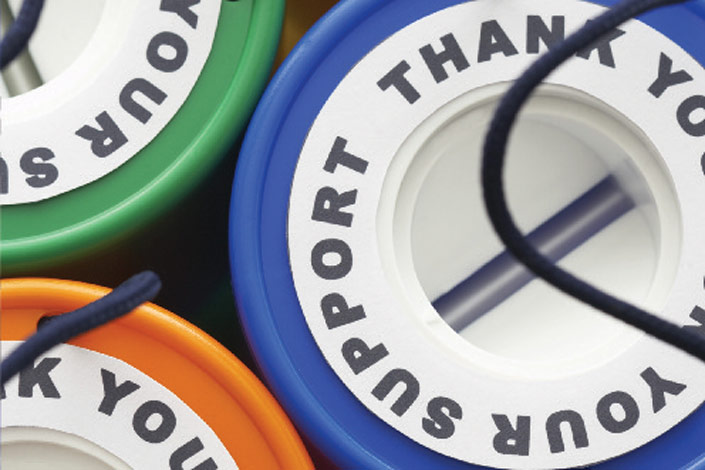
DOWNLOAD the Case Study
To download the pdf version of this Data Capture Case Study, please click here.
FIND OUT MORE
Want to know more about our Data Capture solutions?
Visit our Data Capture & Digitalisation section, or contact us on:
+44 (0)1962 835053
Charitable Organisations – a Data Capture Case Study
September 25, 2012Automated data capture reduces costs
Automating the data entry process for a large UK Charity has dramatically reduced administration costs; allowing 25% more funds to be retained for those in need.
Raising funds
All charitable organisations require benevolent donations in order to carry out their work.
Online donations, campaign responses and supporter surveys generate tens of thousands of documents and form results.
Gift Aid adds value
An additional and very valuable source of ‘income’ is Gift Aid, where charities are able to claim back £2.50 in every £10 donated by UK Tax payers from HMRC.
This requires UK Tax payers to complete a simple form which the charity then processes and passes on to reclaim the money.
Donations peak during Charity Week
Charities receive donations throughout the year, but during Charity Week – an annual awareness week designed to market, educate and encourage more people to consider giving money – donations soar.
Sponsored events, advertisements and the distribution of donation envelopes through household letter boxes, produce critical funds in a short space of time … and a lot of paper-based forms to process, the majority of which are hand completed.
Manual processing is inefficient
Most charities send these forms and other documents to a centralised location for processing, where the huge volumes of paper require extra staff to cope – often a mixture of temps and volunteers.
The information/data from each form has to be entered into the charities’ Customer Relationship Management (CRM) system.
Doing this manually is a slow and often inaccurate process, which because of large form volumes, the difficulty deciphering hand writing and the inexperience of temporary staff working on unfamiliar systems, is prone to mistakes.
Delayed claims to HMRC
Time is literally money in this instance. Lengthy processing times delay the receipt of critical funds.
Inaccurate data entry means that data has to be cross-checked and the correct information re-entered into the system, before it can all be collated and submitted to HMRC for tax reimbursement – which takes around 4-5 weeks from receipt of claim.
Transforming the way form data is captured and input into the CRM system
ProcessFlows, with partner ReadSoft, provided a well-known Charity with an automated data capture and indexing solution, built using the ReadSoft Forms application.
The automated data capture solution automatically and intelligently captures all the data from the forms and conducts a check of the data to ensure it is accurate, before uploading it directly to the CRM system for ongoing processing.
Totally eliminate paper, manual processing and errors
ReadSoft Forms removes the need to manually input data.
Information is automatically extracted from individual forms, or batches of different types of forms (e.g. supporter forms, Gift Aid declarations, survey forms and campaign documents) at the same time.
The software has very advanced Optical Character Recognition (OCR) capability, so regardless of data type – machine printed or hand written – it is able to recognise and process the data without human intervention.
Get it right for HMRC
Charities are required to complete a ‘Gift Aid and tax repayment claims’ form.
Having accurate information speeds up the completion process and reduces errors.
Should a query be raised by the revenue, every individual Gift Aid form is stored in electronic format, ready to be recalled and viewed instantly. Consequently, query delays and therefore payment delays, are reduced.
Staff can focus on more added-value tasks
Twenty staff have been freed up and there is no longer the need to ‘throw people’ at the task at peak times, as the automated solution is capable of coping with huge form volumes without any glitches.
Time is now spent on activities such as providing up-to-date timely information on the success of campaigns and informing about success stories and upcoming events – helping to keep the message ‘out there’ and encourage regular donations.
Partner Quote
With so many documents both directly and indirectly relating to everything the charity does, identifying where automation could be best used to help drive down back office administration has been key. The challenge is to improve the effectiveness of the charity’s operation, and Forms delivers. Ultimately this means more charitable donations are going to go those most in need of help, and that is a true return on investment.
Simon Shorthose, Managing Director, ReadSoft.
To download the Case Study and for more information, please see above left.


ProcessFlows transition to Konica Minolta – FAQ
/in News & Insights /by ProcessFlowsHere is a simple Frequently Asked Questions page to assist you regarding the transfer of ProcessFlows business activities to Konica Minolta Business Solutions (UK) Limited .